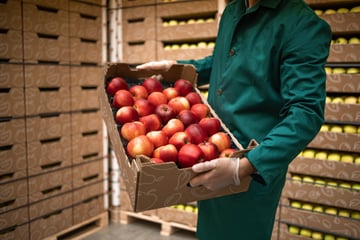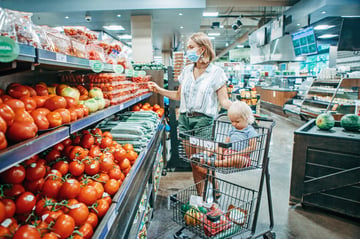Food traceability systems can help your company meet regulatory compliance, guarantee food safety, and enhance supply chain interoperability through a manageable, centralized solution.
Companies increasingly prioritize traceability in their operations because of the growing demand for product transparency and evolving regulatory requirements. Food traceability isn’t just about knowing where your product is; it also entails knowing your supply chain and encouraging interoperability across your systems.
So, what can a food traceability system do for your business? Food traceability systems are one way to ensure your company meets regulatory compliance, guarantees food safety, and enhances its supply chain interoperability through a manageable, centralized solution.
Meet Regulatory Compliance
Tech-enabled traceability is one of the four core elements of the FDA’s New Era of Smarter Food Safety, which takes a more proactive approach to food safety. With a food traceability system, you can be assured that your product meets market and regulatory requirements – and have the FDA documentation required to prove it. As the food industry continues to see stricter regulations for food product quality and transparency evolve, companies need to be prepared with the tools to provide correct documentation and ensure proper record keeping for the traceability of certain foods.
Guarantee Food Safety
Undoubtedly, a top priority for any business – or consumer – is maintaining food safety. In the event of a food product recall, it’s imperative to know the exact location of your product, from production to consumption, to respond swiftly and effectively. The right food traceability system enables you to identify and remove spoiled or damaged products. With real-time data, you can make data-driven decisions and guarantee the highest quality products to the consumer.
Enhance Supply Chain Interoperability
Food traceability systems provide companies with a user-friendly, centralized data source for all stakeholders involved in the food safety process. This interoperability among the supply chain enables suppliers and food companies to share and leverage digitized, real-time data in a central location instead of having product data exist in a silo. This enables better communication and visibility throughout the supply chain for critical tracking events, investigations, recordkeeping, and more.
Investing in a Food Traceability System
Tech-enabled traceability significantly impacts individual food companies and the entire food industry. While investing and implementing these systems can be time- and resource-intensive, they ultimately can help protect your brand and the consumer.
A food traceability system ensures that your company meets evolving regulatory requirements, guarantees food and consumer safety, and enhances its supply chain interoperability through a centralized, user-friendly solution. If you’re looking for the right food traceability system for your business, feel free to reach out to our food safety experts at FoodLogiQ today.




